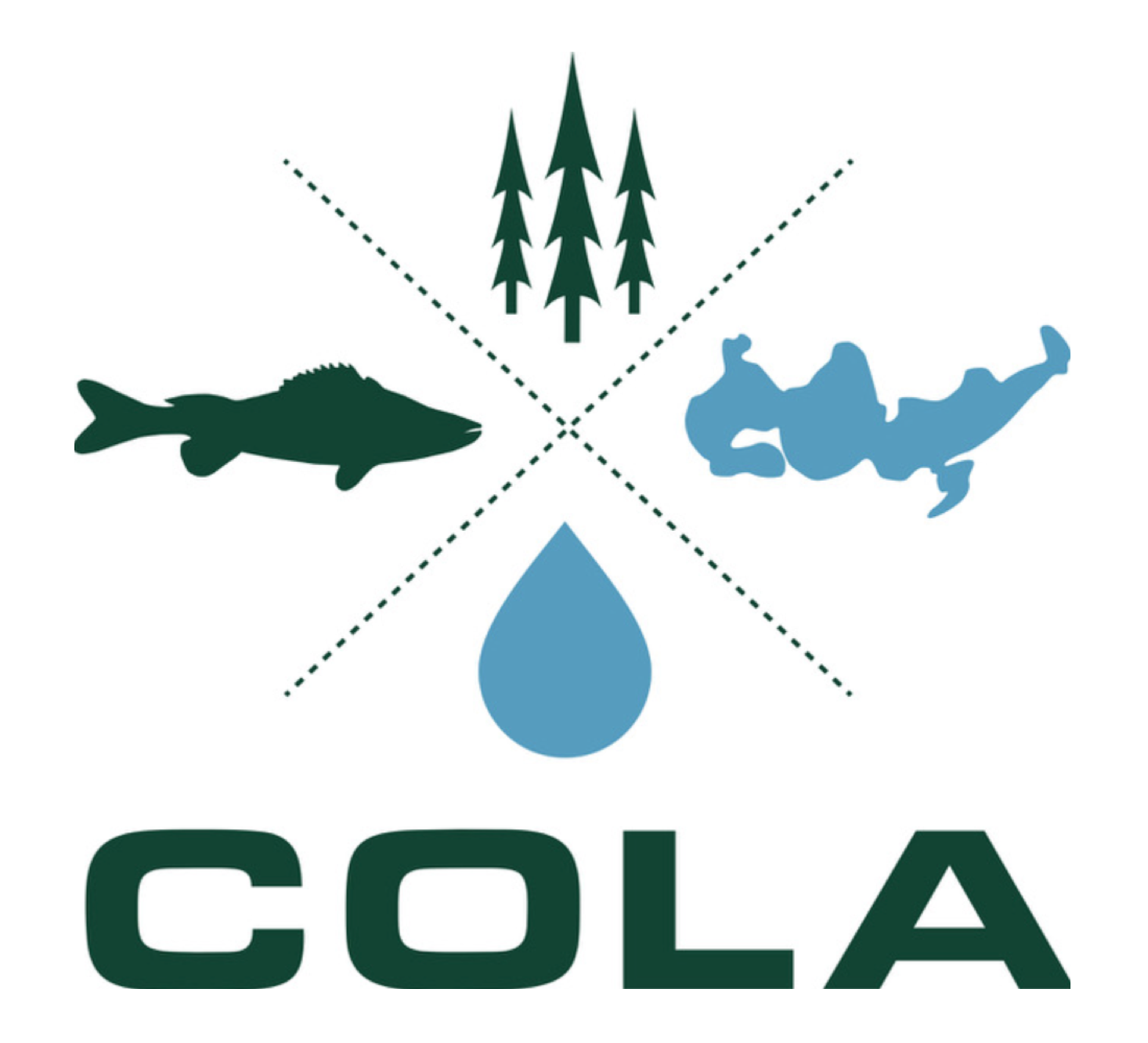Much progress has been made! We do need to continue our aggressive actions, however, to preserve our property values as well as the legacy of our great lakes for our children. But, momentum is growing and COLA has never been closer to implementation. Here is what’s in place, what’s working, what is still left to do, and how you can help get us to those finish lines with a year-end contribution.
Blue-Green Algae Bloom
A significant November 2016 blue-green algae bloom occurred in Stuckey Bay near a cranberry operation's discharge canal. Click on the links below to learn about the results of the data collected, what to look for as a homeowner, and how to report anything new or unusual that you see.
Click on the Links Below For:
COLA Offers $100,000 to Fix Pollution from Cranberry Operations on Lac Courte Oreilles
* See COLA's Full-Page Newspaper Ad Here.
Courte Oreilles Lakes Association, COLA, is offering $100,000 in funds it has raised to help install closed-water management systems on the cranberry operations on Lac Court Oreilles that have not yet transitioned to this best-management practice recommended by the Wisconsin State Cranberry Growers Association.
Massive Die-Off of Whitefish and Cisco in Lac Courte Oreilles
On August 12, dead fish began floating to the surface on Lac Courte Oreilles. An investigation was conducted to determine the scope and the cause of this massive die-off of whitefish and cisco. The data and results are now published in a comprehensive report available to the public.
How COLA Is Encouraging the Cranberry Industry to Control Waste Discharges into Lake
Here's a look at how "Closed Systems" are a way to eliminate the discharge of phosphorus into Lac Courte Oreilles. Considered a "best management practice" in the cranberry industry, two of the four cranberry operations on Lac Courte Oreilles are already embracing this practice. Learn more about how closed systems can protect Lac Courte Oreilles.
Background and Full Story: COLA and LCO Tribe Proceed with Legal Action
Here is a full explanation of how phosphorous pours directly from the cranberry operations into Lac Courte Oreilles as well as how cranberry bogs operate, why they each take millions of gallons of water from the lake throughout the year to run their operations, and why currently they are allowed to return that contaminated water directly back into the lake without any regulation or permit. “Our goal in taking legal action in the form of filing for judicial review is twofold,” says Kris Sivertson, COLA board president and homeowner on the lake: (1) For the courts to take control of the timeframe for rulemaking, and (2) to have the cranberry bogs declared as point sources of phosphorous on the lake.”
COLA and LCO Tribe Proceed with Legal Action
COLA and the Lac Courte Oreilles Chippewa Band of Lake Superior Indians, in response to the WDNR’s rejection of COLA's request for emergency rulemaking, proceed with legal action. The two groups have filed jointly for judicial review--a petition that includes five claims--with the Dane County Circuit Court in Madison, WI.
WDNR Rejects Proposal for Emergency Rulemaking
This is the rejection letter received on May 11, 2016, from Susan L. Sylvester, Director of Water Quality Bureau/Water Division of the WDNR. COLA and the LCO Tribe requested the emergency rulemaking at the same time they jointly submitted their SSPC proposal on March 30, 2016, for a more protective phosphorus standard on Lac Courte Oreilles.
COLA Asks Wisconsin DNR to Initiate Emergency Rulemaking
This announcement of COLA’s Site Specific Phosphorus Criterion proposal to the WDNR outlines why the new phosphorus standard for LCO is needed, why it has taken eight years to get to this point, what the current roadblocks and timing delays mean for the lake and what the WDNR is expected to do about it. Includes (1) Petition with 5 Claims to WDNR and (2) Rejection Letter from WDNR.
COLA Submits Letter to WDNR Director of Water Quality Bureau / Water Division
COLA submits letter with Site Specific Phosphorus Criterion proposal to Susan L. Sylvester, Director of Water Quality Bureau/Water Division of the WDNR, with copies sent to 16 other individuals and entities.

